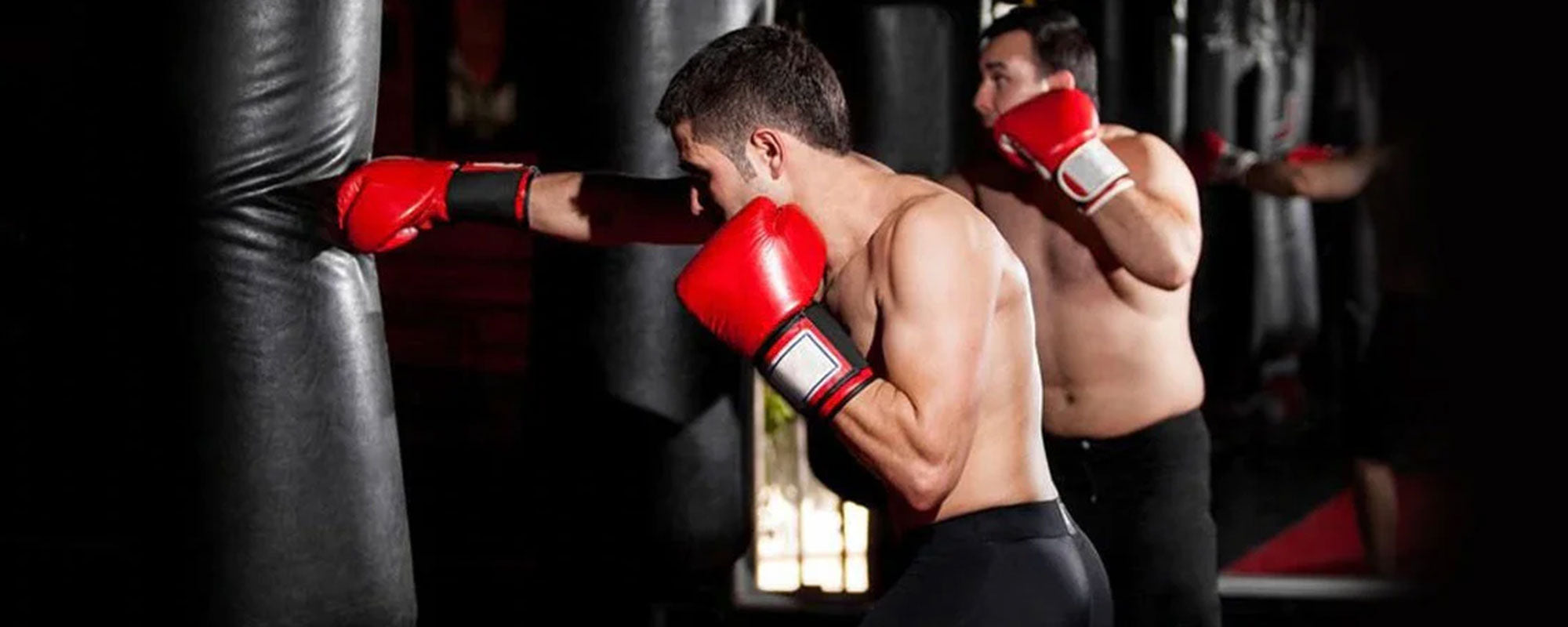Table of content
Brazilian Jiu-Jitsu (BJJ) is a growing and unique martial art that focuses on grappling techniques rather than striking like in boxing. Jiu-Jitsu athletes focus on securing a mount on an opponent and subduing them by applying joint locks, takedowns, throws, sweeps, and chokeholds. This martial art has resulted in BJJ athletes developing acute and chronic injuries. Injuries in martial arts are more prevalent because of the use of hands and legs during grappling. The force applied when grappling with an opponent may cause injury to BJJ practitioners.
Brazilian Jiu-Jitsu, one of the more common competitive martial arts, is further divided into two branches, consisting of distinct rules and attire. Two different categories of BJJ are Gi and No-Gi. Both types of BJJ can result in injuries but their intensity may differ due to the attire.
1. What are the Most Common Injuries in Brazilian Jiu-Jitsu?
Jiu-Jitsu is an aerobic activity that involves grip strength and muscular endurance. Many researchers wrote in their articles that recovery is essential for BJJ athletes’ longevity and success. The risk of injury in martial arts is high during competition and continues to increase as the level of competition increases. But in jiu-jitsu, injury rates vary between Gi and No-Gi BJJ.
According to researcher Ethan M. Kreiswirth
“Injury was defined as a situation in which the fighter either requested medical treatment or was unable to continue a contest due to pain or discomfort.”
1.1. Skin Injuries
The most common injuries that happen to BJJ athletes are:
- Contusions
- Bruises and Hematomas
- Lacerations and Abrasion.
The most common skin injuries in BJJ often require no treatment. RICE (rest, ice, compression, elevation, and injury-specific treatments) can be used interchangeably depending on the severity of the injury.
1.2. Soft Tissue Injuries
Soft tissue traumas mainly refer to strain in the ligaments and muscle damage. More precisely, it can include:
- Cartilage injuries
- Synovitis
- Impingements
- Bursitis and Chronic Instability
- Muscle and Tendon Injuries
- Brain Degeneration
- Decrease of Cognitive Functions
1.3. Joint Extremities Dysfunction
The severity of soft tissue injuries may lead to joint chronic trauma and more serious consequences such as:
- Ruptures
- Dislocation and Fractures
1.4. How Common are Neck or Wrist Injuries in Brazilian Jiu-Jitsu?
Neck or wrist injuries are common injuries in BJJ fights. It happens when grappling techniques are applied. These types of injuries usually result from high impact collisions. The slow and repetitive pressure may cause serious injury to the neck. Rear naked choke and neck cranks in No-Gi BJJ are dangerous and can cause serious damage to an opponent.
1.5. Risk Factors in Brazilian Jiu-JItsu Injuries
The popularity of martial arts is rising day by day. It is necessary to study the risk factors associated with injuriesto develop efficient strategies for trauma prevention. Several potential factors were studied, such as age, gender, weight category, experience, training, and competition to calculate the signs of possible injuries.
Gender
There are no specific differences in the injuries seen in both male and female fighters. Most of the injuries both male and female fighters experienced were in the lower extremities, such as:
- Head
- Neck
- Spine
Exposure Training and Competition
Competitions that require high levels of skill see increased risk of injury. In fact, the risk of injury is highest in hybrid-style martial arts (e.g. mixed martial arts), also referred to as No-Gi jiu-jitsu competitions.The major causes that contribute to severe BJJ injuries in competitions are:
- Psychological Stress Factors
- Constant Defeats
Age and Experience
It is hypothesized that injuries may be related to skill level and the amount of experience a BJJ fighter has. Age and experience are significantly correlated as a potential risk factor in combat sports.
The Recovery ratio of injuries is faster in kids as compared to adults and then adults to middle age persons.The earlier you start practicing jiu-Jitsu, there are minimal chances of injury. The more you roll on the mat you learn different techniques to protect yourself from the opponent. BJJ training strengthens and conditions your body, to cope with the pressures during the fights.
2. What is No-Gi BJJ?
First of all, one needs to understand the difference between Gi and No-Gi BJJ.
2.1. No uniform
In No-Gi Brazilian Jiu-Jitsu, fighters are required to wear a traditional uniform known as a BJJ gi. This uniform is made of a heavy cotton material. The main difference between Gi and No-Gi BJJ competitions is the wearing of a jiu jitsu uniform.
2.2. Shorts and T-Shirts
In No-Gi BJJ, the fighters wear BJJ shorts and T-shirts made of polyester.
2.3. Rash Guard
The most common protective clothing worn in No-Gi BJJ competitions is the rash guard. Wearing a rash guard with BJJ shorts and T-shirts help reduce the likelihood of getting scrapes, rashes, infections, etc. It makes it easier for BJJ practitioners to focus on the fight compared to Gi BJJ.
2.4. Why Do Fighters Prefer No-Gi Jiu-Jitsu?
The following reasons are why fighters prefer No-Gi BJJ:
- Strong grip
- Less friction
- Heel hooks
- Mixing with wrestling techniques
- Improved cardio
2.5 Is Brazilian Jiu-Jitsu Effective Without a Gi?
Brazilian Jiu-Jitsu requires wearing a uniform known as Gi. MMA is a mixed martial art which is fought without GI. BJJ focuses on the enhancement of grapplers grip and MMA fights are composed of BJJ techniques. Anything learned with GI can be applied easily in NO-Gi training. With No-Gi there is less friction experienced by the fighters. There are no intervals in MMA fights. Fighters grips the wrists or pulls the neck rather than pulling the sleeves or collar of the opponent. Grappling with Gi may slow down but practicing jiu-Jitsu with GI and without Gi can be equally effective. Grappling with Gi can serve as a strong base for MMA fights.
In MMA, fights are considered the right choice just because of its no-gi. It enhances the groups of the BJJ FIGHTERS and fighting techniques can be easily applied. If you train yourself without a gi then try following it. Gi may hinder your performance.
But some BJJ practitioners suggest training with a gi to strengthen yourself and improve your training.
3. No-Gi BJJ Injuries
A descriptive epidemiology study was conducted in California on No-Gi BJJ black belt athletes on injuries they sustained during a competition.
Key factors revealed about no-gi BJJ injuries included:
3.1. Joint Injury

In No-Gi BJJ competitions, there is a higher risk of elbow and knee injuries. It is found that BJJ brown and black belts suffered the highest number of joint injuries.
3.2. Takedowns
Takedown maneuvers are the most common causes of injury in No-Gi competitions. A takedown is considered a dangerous technique in No-GI and MMA fights due to its defensive nature.
An opposing force may cause injuries to the attackers also. You have to pick up your training partners carefully as your opponent may strike with headbutts, elbows or knees during takedown.This striking then leads to concussions and lacerations. Wrestlers' ligaments are strained through overextending of limbs when defending takedowns. Striker may hit with knee or hip of the opponent when executing takedown.
Some of the grapplers may have serious injuries in the history which may affect their performance during takedowns.
3.3. Cervical Injury
There is an increased rate of facial and head injury In MMA fights due to the striking.
4. Benefits of No-Gi BJJ
MMA fighters think that fighting while wearing BJJ shorts improve their skills and improve the quality of their training for the following reasons:
Freedom of Movement
- Helps you kick higher
- Allows you to move faster
- Less friction when on the ground
Comfy
- Absorption of moisture
- Improved blood flow
Safety
- Reduced risk from cuts
- Sticks close to the body
4.1. What is More Realistic: Gi or No-Gi BJJ?
Gi BJJ
Gi BJJ has the following advantages:
- More trained grapplers
- Teaches guard passes and escape moves
- More fighting potential
No-Gi BJJ
No-Gi BJJ has following advantages:
- SafetY
- Less injuries
- More control over the opponent
- Preference for certain techniques
Can Brazilian jiu-jitsu cause brain damage?
Strikes may cause brain damage due to multiple hits to the head but BJJ chokes can pose just as much or more risk to your brain. Chokes may cause serious threat to one’s life if oxygen supply to the brain ceases for more than two minutes.
5. Prevention of Injuries in No-Gi Jiu-Jitsu Athletes
In No-Gi competitions, injuries cannot be completely eliminated but can be minimized by following safety rules and procedures. Consider the following strategies to prevent injuries.
5.1. Physical Checkup
A complete checkup of the body’s functions related to cardio, nerves, and muscles prior to training and competitions will help identify any potential health issues, reducing the chances of injury.
5.2. Warm-Ups
According to Master S.H. Yu, warm ups help prevent sprains and muscular aches. Then Sr. GrandMaster Yu added,
“Warm-up is a continually evolving sequence that prepares the body, mind and spirit for success and fluidity.”
5.3. Take a Rest
Letting your body rest helps speed up the healing process. Rest is the most effective way to improve recovery from injuries. It is not recommended for athletes to continue training if they have not fully recovered. Any pressure on the joints and muscles may worsen the condition resulting in delayed recovery that can affect your performance in BJJ matches.
5.4. How to Avoid Injury When Doing No-Gi Brazilian Jiu-Jitsu?
Injuries sustained in No-Gi BJJ can be avoided by taking training classes taught by experienced coaches. Listen to all instructions carefully. Patience is required to be able to effectively learn martial arts. It is also recommended you wear protective accessories and seek medical advice.
5.5. Do You Sustain More Injuries in Gi or No-Gi BJJ?
The injury rate slightly varies between Gi and No-Gi BJJ. Compared to Gi BJJ, No-Gi BJJ sees less cases of severe physical trauma. In No-Gi BJJ, you experience less force or friction which results in less hand or joint injuries.
5.6. How Common is Cauliflower Ear in Jiu-Jitsu?
Cauliflower ear is common in martial arts due to ears being struck during chokes or strikes The ears may be hit repeatedly, resulting in cartilage bone breaking, causing damage to the eardrums. Cauliflower ear can result in a hearing impairment.
5.7. Is it Possible to Train in BJJ and Not Get Cauliflower Ear?
To reduce the likelihood of suffering from cauliflower ear, BJJ fighters can wear protective headgear that covers the ears, saving you from being severely damaged in No-Gi BJJ competitions.
5.8. What are the Most Common Submissions in No-Gi Jiu-Jitsu?
An armbar technique applies pressure to cause as much discomfort to the opponent as possible. A rear naked choke is also a useful choke in No-Gi fights as they can cause an opponent to fall unconscious due to cutting off the blood and oxygen supply. Both chokeholds are the most popular submissions, followed by leg and arm locks.
6. Conclusion
According to researcher Wilkerson, injuries like minor soft tissue damage, hematomas, flesh wounds and fractures mostly happen to highly qualified BJJ fighters. Still, research has shown that Brazilian Jiu-Jitsu is safer compared to other martial arts.
Teaching BJJ fighters about injury frequency due to sweeps, reversals, submissions, etc. can help BJJ athletes become more aware of the potential risks that can lead to injuries. Improving safety and reducing the likelihood of injury can ensure more practitioners spend more time training rather than being stuck in a hospital bed.












Leave a comment
This site is protected by hCaptcha and the hCaptcha Privacy Policy and Terms of Service apply.